Here is a gun I picked up at a local auction that must have a story attached – perhaps visitors to the site could help me?
It has a P53 type lock externally marked LSA Co and 1868 with a strange pattern just visible in front of the cock – the lock is pretty pitted on the outside, but the inside is shiny & good quality and carries a broad arrow mark and the name Barnett plus the stamp J.C. – Barnett & Co made locks and barrels for the British Government from about 1854(?) It is missing its bridle (holes exist). The barrel appears to be a musket barrel of about .630 bore (not the .656 that was used when Enfields were made in smoothbore), of length 33 inches, giving the gun an overall length of 48 1/2 inches (weight 7 1/2 lbs) The barrel carries the stamped name ‘MANTON & CO CALCUTTA’ as one stamp, followed by ‘& LONDON’ made of individual letter stamps. It carries Liege proof marks – (no it doesn’t, they appear to be Birmingham post 1914 – more research needed- see comments). There is a bayonet boss in the usual place, and a foresight but no rear sight or any sign that one was ever fitted. The trigger guard is stamped with the number 35110 and the butt (LH side) has 88 in one place and 77 in another. The stock looks fairly like a normal P53 stock, although I’m not really familiar with them. It has three old style barrel bands (before Badderley) – the sling swivel is on the muzzle one, the other swivel is on the rear trigger guard screw. The ramrod is steel, and has a somewhat squared end with a slotted jag – no bulge – I can’t see a retaining spring in the stock. Overall it looks ‘of a piece’ and not mucked about with in recent times. The British were at pains to equip the Indian troops with guns that looked like Enfields but were not effective against their own weapons – this gun may have been made up or more probably imported by Manton & Co., Calcutta (at that time run by Wallis) using old British Enfield locks, or maybe old stock complete guns, with the barrels replaced by new smoothbore barrels to ensure inferior performance (and not capable of taking standard issue British ammunition!). It would seem that this gun must be one of many that were issued, hence the 35110 stamped on the trigger guard. Any thoughts gratefully received.
see comments for more information.
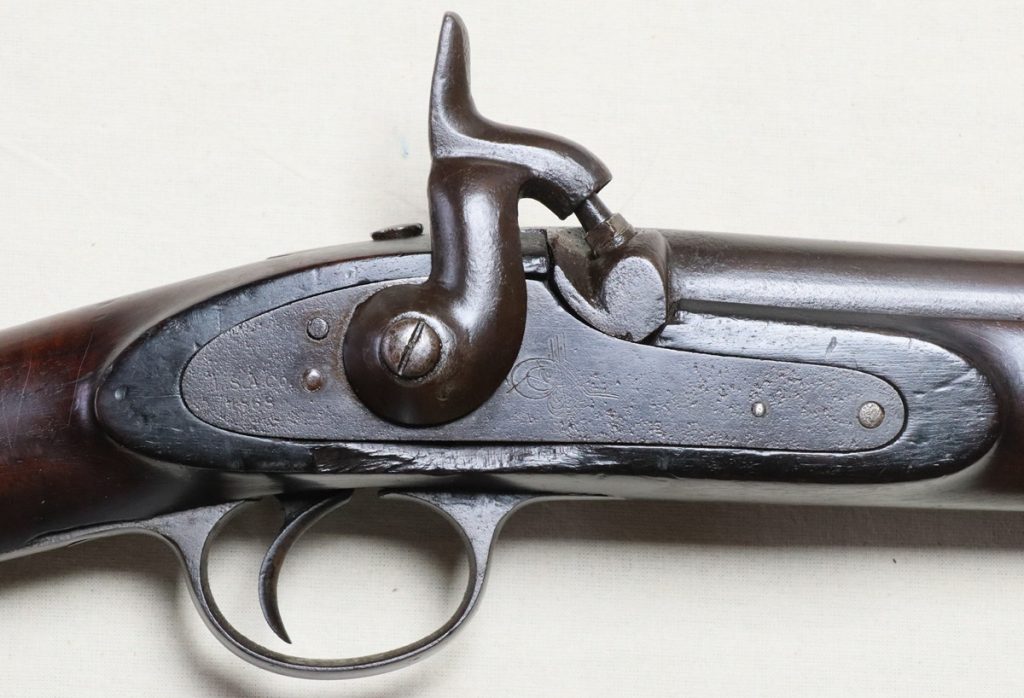
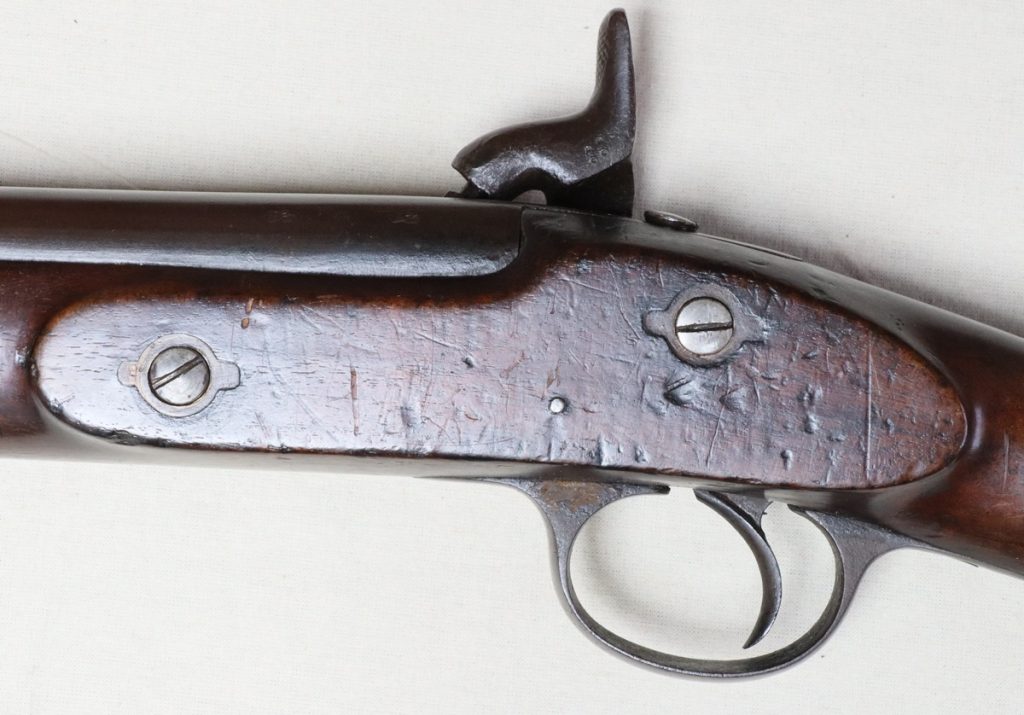
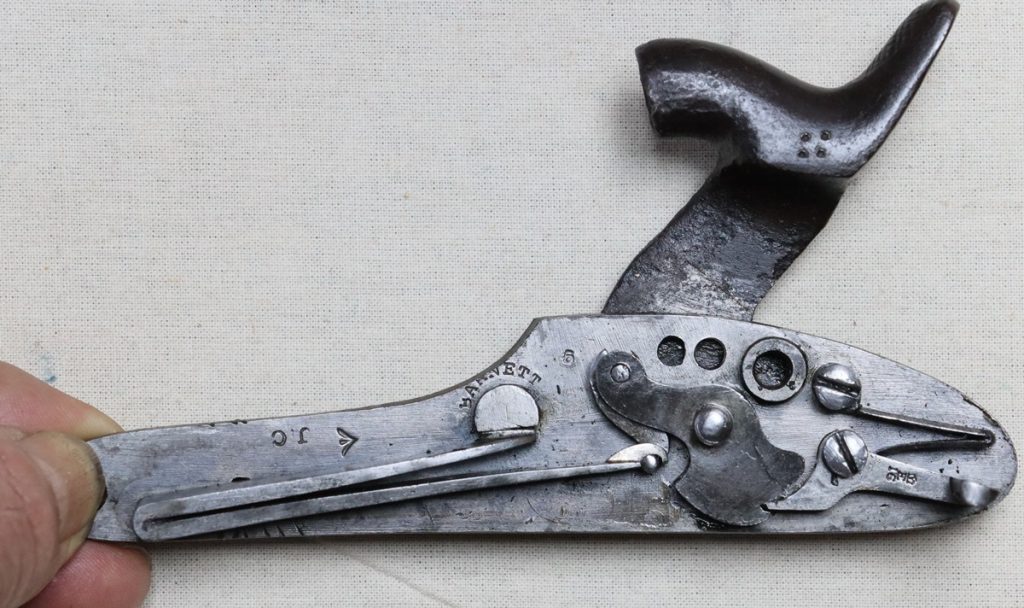
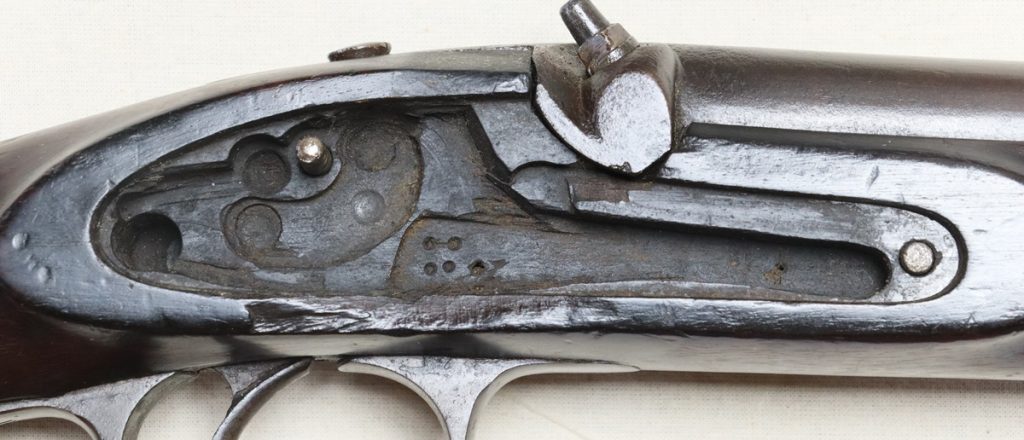

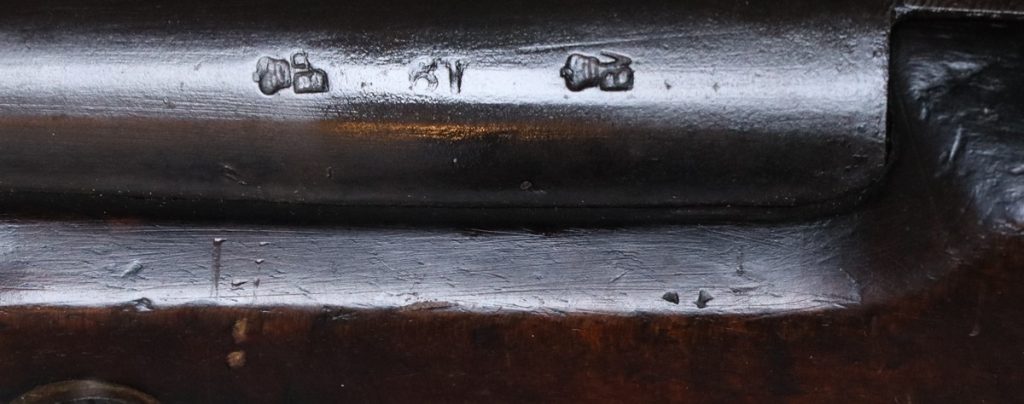

Sling swivel is at back of trigger guard.
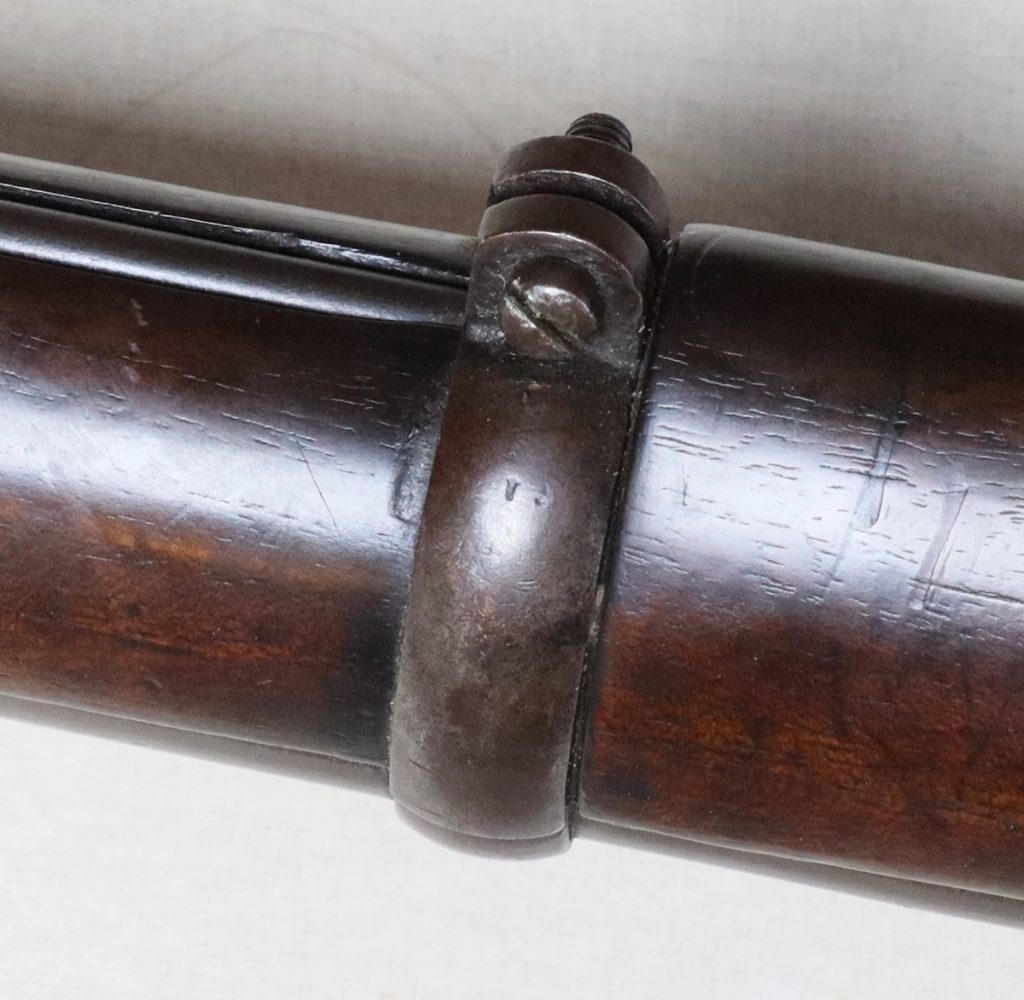
Try the British Militaria Forum for advice. Definitely not a British, HEIC or EIG, musket. Native State or civilian. There was no Indian Proof at the time but a musket exported from Britain needed a British Proof by law, wherever it was going.
Peter Dyson has bridles for this lock at £20.
Hello Tim, just noticed this post!
I have one quite like it – although I can see no serial number on mine. Its almost identical in “Enfield 2 band” format – however the barrel is by John Clive, lockplate signed by J.C as yours. I suspect the maker or perhaps “assembler” was Thomas Turner of Birmingham as his name also appears stamped on the barrel & stock.
I was told that it was an Indian Army smoothbore – and not smoothbored from a rifled barrel, made as smooth. They were apparently made by the British gun trade from various makers and components and shipped to India.
However I’m open to all suggestions that may differ from my understanding of this arm
Best,
Jim
Hello Tim, regarding the “Enfield”. It is Not an E.I.C issue weapon or a “government” weapon. The E.I.C. had three armies based on there original trading factories in Bombay, Madras and Bengal (Calcuta) known as the presidences. These were retained after 1867 and were known as government troops, as opposed to “Crown” troops. The sepoys were usually armed with the previous generation of weapons to those carried by Crown troops. Smoothbore P53 models when Crown troops had Martini`s ect. Direct governance was only of one third of India. The remaining two thirds were under local independant governance of the Maharajas ect`, assisted by the British “Resident” and his staff. These independant Kingdoms were allowed their own private armies of various sizes, but they were only allowed smoothbore weapons.
I have known three ex Indian Army officers and recall one who was attached to a “Residents” staff in the 1930`s, that the Raja had a small army armed with muskets and smootbore cannon and a regiment of lancers.
This i hope explains the discrepancies in your weapon.
Hi Paul,
Thanks for the info – The jurisdiction of the EIC was over by the date on the lock 1868 and its not government issue, so I guess its a private army, but the number 35110 on the trigger guard implies quite a big one! The locks by Barnett could be ex British issue P53s or a private order. Obviously Manton of Calcutta had a hand in it.
Tim
Hi Tim. Are you sure the proof marks are Liege? The information I have indicates that the crown over BV and BP are definitive proof marks for arms of English manufacture and are from the Birmingham Proof House from 1904
Hi Bev,
You are right that they don’t look like Liege proofs, I misread the book! It is very difficult to reconile them with a date post 1914 – and the crown over BP says in my book that it was from 1914 only for black powder Parabellum pistols. I don’t have the Tower proof marks to compare, but I wonder if it was an Indian proof. Looking at them under the microscope it may not be a complete P on the BP. I haven’t taken the barrel off yet, so there may be original proof marks underneath.
Tim
Hello Tim, the script on the lockplate looks to be arabic, and would tye in with this being from one of the Indian state`s army`s. The odd caliber would also suggest the same, being unable to use government ammunition.